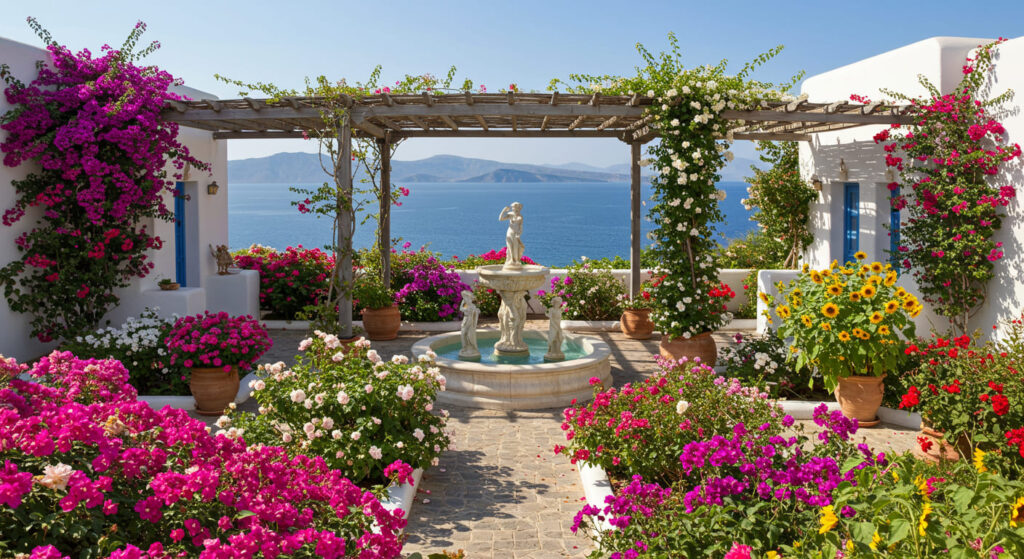
Transform your garden into a sun-drenched Mediterranean oasis with our Greek-inspired DIY makeover guide. In 2025, the Greek garden aesthetic—think whitewashed walls, vibrant terracotta pots, and drought-tolerant plants—is a top trend in the UK. This budget-friendly project brings holiday vibes to your backyard while embracing sustainability. Follow our step-by-step guide to create a stunning, low-maintenance outdoor space perfect for relaxing or entertaining.
The Greek garden aesthetic combines timeless charm with practical benefits:
Whether you have a small patio or a sprawling backyard, this makeover is adaptable and achievable. Let’s dive into the steps to bring Santorini to your garden!
Estimated Cost: £50–£150, depending on sourcing second-hand materials.
Sketch your garden layout to maximise space and sunlight. Greek gardens embrace open, airy designs with focal points like a central patio or pergola. For small spaces, focus on a corner with potted plants and a gravel path. Use apps like Garden Planner or a simple notebook to map it out.
Pro Tip: Place taller plants (e.g., olive trees) at the back and shorter herbs like thyme in front for a layered look.
A whitewashed wall is the backbone of the Greek aesthetic. Choose a garden wall or fence and apply eco-friendly whitewash paint.

Gravel paths mimic the pebbled streets of Greek islands.
Budget Tip: Source gravel from local suppliers or reclamation yards to save costs.
Choose plants suited to the UK’s climate (hardiness zones 8–9):
Plant in well-drained soil mixed with sand or grit. Group pots in clusters for visual impact.
Pro Tip: Water sparingly—most Mediterranean plants thrive on neglect once established.
Terracotta pots bring warmth and authenticity.
A wooden pergola or bench adds a seating area for that Greek taverna feel.
Eco Tip: Use natural wood preservatives like linseed oil instead of chemical sealants.
Solar lanterns enhance evening ambiance without raising energy bills.
Visual Idea: Show a nighttime shot of glowing lanterns along a gravel path.
Incorporate blue accents (cushions, tablecloths) to evoke Greek island vibes. Add a small water feature, like a stone fountain, for soothing sounds. Use natural textures like jute rugs or wicker chairs for authenticity.
This DIY makeover is affordable, sustainable, and adaptable to any UK garden size. It’s perfect for beginners and seasoned DIYers alike. Plus, it boosts biodiversity with pollinator-friendly plants and reduces water usage, aligning with 2025’s eco-conscious trends.
We’d love to see your Greek-inspired garden! Share your before-and-after photos in the comments or tag us on social media with #GreekGardenDIY. Need help sourcing materials or choosing plants? Drop your questions below, and our community will chime in!
Stay updated with our latest updates
Home Sophisticated brings elegance to your living spaces with premium home décor and furnishings. Explore stylish wall art, cozy rugs, modern lighting, and more to transform your home into a haven of comfort and sophistication. Shop timeless designs crafted for every style!